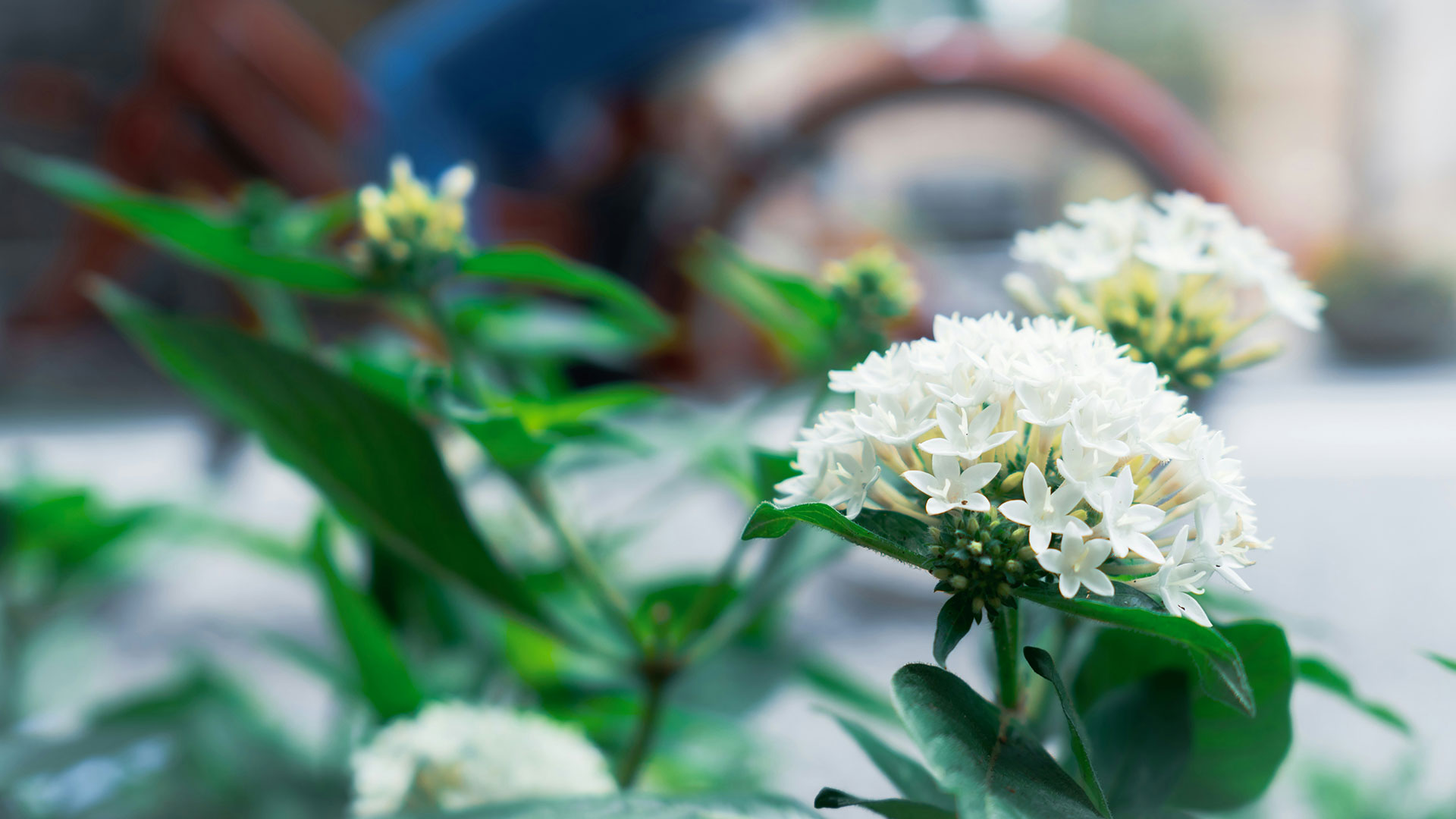
6 Low Maintenance Flower Bed Ideas
Flower beds are a gorgeous way to add color and excitement to your landscape. But for those without a green thumb, the idea of maintaining those flowers is not a task they want to take on. Fortunately, you can have a flower bed (or three) that is easy to care for.
Low-maintenance flower beds do best when they’re left alone. They require very little upkeep or resources from you, and you can include all kinds of flowers that look good and attract pollinators to your yard. Here’s everything you need to know about planning the low-maintenance flower bed of your dreams.
What Is a Low-Maintenance Flower Bed?
Low maintenance doesn’t mean “no work.” Even the lowest maintenance flower beds need some upkeep now and again. Mulching the bed, feeding the soil, and watering the plants all count as maintenance. These tasks ensure your flowers, plants, and garden thrive.
A low-maintenance flower bed is easy to care for and requires very little upkeep. While many low-maintenance flower beds are small, they don’t have to be. It’s far more important to include plants that don’t need daily watering or regular care (like frequent trimming), and the plants are easy to get to.
Quick Tips for Planning a Low-Maintenance Flower Bed
The best low-maintenance flower beds start with a plan. Here’s what to consider as you get started.
Use Few Flowers
Sticking with a single flower or plant makes things simple but visually dull. Fortunately, even a low-maintenance flower bed can have a mix of flowers as long as you stick to two or three types. Anything more than that, and you may find yourself doing more care and upkeep than you expected.
Location Matters
Some plants love the sun, and others need partial shade or even a lot of shade, so as you’re picking plants, consider where you’re planting them. Putting a sun-loving plant in a shady area creates more work trying to keep that plant happy and alive.
Also, consider drainage. Some areas of your landscape may get more water than others. While you can take advantage of that and plant species that thrive in those conditions, you can also add drainage systems that direct rainwater to your garden bed.
Mulch
Mulch is every gardener’s secret weapon. It protects plant roots, prevents weeds, and helps soil retain moisture. While mulching once or twice a year is a bit of work, it goes a long way toward keeping your low-maintenance garden happy.
Types of Flowers to Include
Incorporating native species into your plans is a great way to keep your flower bed low-maintenance. These flowers and plants are already adapted to the local climate and can handle whatever weather comes their way.
However, there are other plant and flower characteristics to consider when selecting plants for your flower beds.
Independence
Some of the best flowers for a low-maintenance flower bed are those that don’t need you. Species that require very little human intervention, like trimming, burning, deadheading, or staking, work well in low-maintenance gardens.
Drought-Tolerant
All plants need some water to survive, but drought-resistant plants are a must-have in any low-maintenance flower bed. You can skip the daily or even every other day watering, and when dry conditions persist, your garden will survive and maybe even thrive.
Pest and Disease Resistant
Another characteristic to look out for is plants that are pest- and disease-resistant or even repellent. While every species has a natural enemy, some plants and flowers are resistant to the common pests you’ll find in your backyard. For example, lavender repels fleas, moths, and mosquitoes, while deer dislike lamb’s ear.
Plant and Flowers for the Pacific Northwest Climate
Whether you want bright flowers, green plants, or a mix, there are plenty of species that thrive in the Pacific Northwest. Flowering plant options include:
- Shasta daisies
- Dahlias
- Evening primrose
- Cardinal flower
- Lupine
- Rock rose
- Black-eyed Susan
For green plants, you can use:
- Wild ginger (this isn’t edible, though)
- Sword fern
- White sage
- Lamb’s ear
- Hakone grass (an ornamental grass you don’t mow)
Caring For a Low-Maintenance Flower Bed
Beyond selecting a combination of low-maintenance plants and flowers, there are a few additional steps you can take to keep your flower bed as easy to care for as possible.
Irrigate
No matter what flowers or plants you choose, they will need water. Even a cactus can’t survive without some hydration!
To keep things “hands off,” consider a drip irrigation system that slowly waters a plant’s roots to keep them watered without wasting valuable resources. You can tie it to a rainwater capture system to take advantage of the abundant Pacific Northwest rainfall. Alternatively, you can install a more traditional in-ground sprinkler system that works on a timer, watering your plants on a set schedule.
Go High
Placing your flowers in a raised garden bed helps prevent weeds from spreading and stops animals (like moles) from getting underneath your plants and damaging the roots. What’s more, raised garden beds are often easier on the knees and back!
6 Ideas to Inspire Your Low-Maintenance Flower Bed
Picking and planning are a huge part of creating any flower bed. But sometimes, seeing these plans in action can help with your design goals. Here are six ideas for a low-maintenance flower bed to inspire your plans.
1. Less Can Be More
While this bed is large, it’s very low maintenance. Choosing rocks instead of grass or another green ground cover means there’s nothing to mow or maintain, and it’s less likely weeds can take root. The rocks help protect plant roots and keep the soil moist. It also uses a mix of green succulents and drought-resistant plants that thrive in a dry environment.
2. Raised Beds
This is an excellent example of using a raised bed to create a low-maintenance flower bed. The wood protects the plants and plant roots from damage and contains the entire garden in a neat but visually interesting package.
3. Succulents
Succulents are generally easy to care for. They prefer dry soil (so they don’t need a lot of watering), but most varieties prefer full sun (about six hours a day). Once they’re in the ground, you can generally ignore them, despite how ornate they look.
4. Small Flower Beds
One way to go low-maintenance is to think small. This creative flower bed makes use of the available space and creates a nice base for the flag pole. Selecting compact flowers makes it easy to access the flag pole without damaging the plants, and the stone edging does double duty giving someone a solid place to stand while containing the garden.
5. Easy Tiers
This is another great example of less is more. Using tiers makes it easier to maintain the flower beds, and a mix of green plants requires less upkeep than flowers while still creating visual appeal.
6. In Arm’s Reach
This is another example of a tiered approach. Interestingly, it uses some annual flowers, which takes a bit more work as they have to be replanted every year. The beauty here is that each flower bed is easily accessible by standing on the step and is narrow enough so the gardener can reach the entire bed without stretching or stooping.
Less Work, More Enjoyment
The best part of a low-maintenance flower bed is that you can create a beautiful yard that requires minimal work. While initially creating the flower bed may take some labor (like building a raised bed or selecting new flowers), what you save over time allows you to enjoy the fruit (and flowers!) of your efforts.
If you’re considering a low-maintenance flower bed, a new irrigation system, or need some professional advice, Dig’um Dirtworks is here to help. Contact us today for a free consultation, and we’ll help you design the yard of your dreams.

